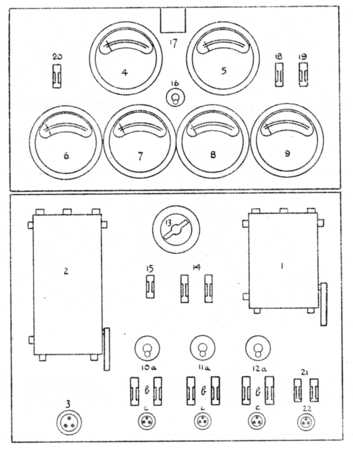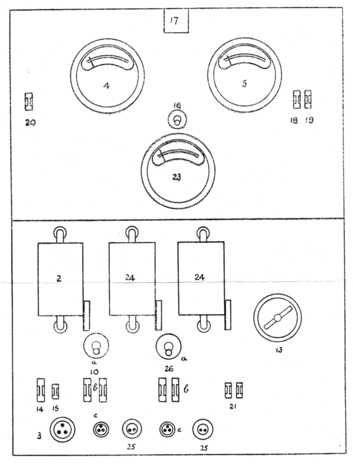
Lister JP3 Generator
History
After producing a succesful range of petrol engines, Lister saw the potential of manufacturing a diesel engine. Competition at the time was very strong with many manufacturers specialising, however Ruston & Hornsby, Lister's main competitor agreed to join Lister in a new venture to produce a Diesel engine. This engine was to be known as the Joint Product or JP. A series of engines was produced in the JP range, basically to the same design but with options of different number of cylinders. Production commenced in 1929 and continued up until 1971. The engines featured in this article were used to run generating sets to power radar equipment for the armed forces during wartime.
Description
A Lister 'Patent Combustion Chamber' is incorporated in the cylinder head with a variable compression ratio to aid cold starting. A handwheel on each cylinder when unscrewed introduces an extra gallery to the combustion chamber once the engine is running. A monoblock construction is used, with seperately removable cylinder heads. Lubrication oil is pump fed to the camshaft and fuel pump bearings whilst the big-end bearings are splash fed. Early engines had an oil pressure gauge . Bosch-CAV Injection pumps were used prior to WW2 where CAV pumps were used in addition. Speed is controlled by a centrifugal governor operating on the fuel injection pump. The engine is mounted on a sledge type chassis with the water radiator at the front with an additional cooling fan driven from the engine. At the opposite end is mounted the generator unit complete with control board mounted on shock absorbers. Complete generators could be vehicle or trailer mounted, usually on a 3-ton 2-wheel trailer.
| Power rating | 27 hp |
| Cylinders | 3 |
| Bore | 4.5" |
| Stroke | 5.5" |
| Power at 1100rpm | 29hp |
| Power at 1000rpm | 27hp |
| Power at 850rpm | 23hp |
| Fuel tank capacity | 8gals |
| Radiator capacity | 4.5gals |
| Engine weight | 1276 kg |
| Fuel consumption | 1.5 gals/hr |
| Generator output | 230V ac |
| Generator power | 15 kVA |

Lister JP3 Generator, 3 receiver circuits

Lister JP3 Generator, single receiver circuit
Key to diagrams
[1]Isolator switch.
[2]Transmitter switch and fuse box.
[3]Transmitter plug socket.
[4]Frequency meter.
[5]Voltmeter.
[6]Transmitter ammeter.
[7],[8],[9]
Receiver ammeters.
(7 & 8 may be ommitted on certain generators)
[10],[11],[12]Receiver circuits.
(a)Switches.
(b)Fuses.
(c)Plug sockets.
[13]Field regulating resistance.
[14]Spare receiver motor fuse.
[15]Spare vibrator motor fuse.
[16]Pilot lamp switch.
[17]Switch board lamp.
[18]Voltmeter & frequency meter fuse.
[19]Switchboard and inspection lamp fuse.
[20]Spare instrument fuse.
[21]Vibrator motor fuse.
[22]Inspection lamp plug socket.
[23]Ammeter (all circuits)
[24]Mark III switches.
[25]Mark III plug sockets.
[26]Battery charger circuit (supplying 230V ac).
(a)Switch.
(b)Fuse.
(c)Socket.
* Note :
There were many variations of generator used depending on the application. Some were manufactured by Mawdsleys or Tilling Stevens. Radar generators were mainly 230V ac and typically rated at 15 kW
